

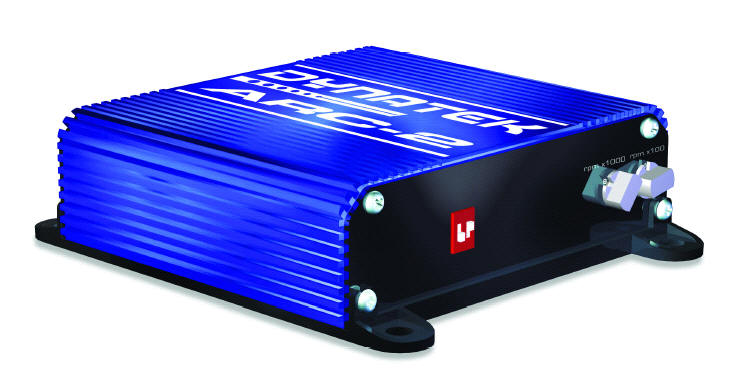

Introduction
Thank you for purchasing the Dynatek ARC-2 Ignition. Please take a few moments and read through all of the installation information before attempting to install this. If this is being installed on a vehicle which we make a plug in harness for, we highly suggest you use that harness. Consult the Installation Guide included with that harness for vehicle specific installations. If you have any more questions, please consult your Dynatek dealer before installation. The ARC-2 ignition was designed with several key technologies that enable it to optimize your vehicles ignition system, and realizing the performance potential of your vehicles engine. The design features that help to do this were how the ARC-2 was named Asynchronously Restriking CDI 2 channel. The Asynchronous firing allows you to run the 2 channels independently. Each channel has its own storage capacitor. This allows the ARC to fire the 2 channels simultaneously, or nearly simultaneously. This is necessary in applications where there are leading and trailing spark plugs firing close together. The Restriking fires off lean mixtures at idle and low RPMs. Restriking will fire the spark plug multiple times at low RPMS, so that if the mixture did not light the first time, it will be ignited the second time, ensuring that the combustion occurs. The ARC uses ISP (Intelligent Spark Profiling) to speed up the second and later sparks. This ensures that the second spark on the ARC occurs sooner than would otherwise be possible. The Capacitive Discharge Ignition design produces a short duration high intensity spark, with a profile designed to ignite under the most severe conditions. This high voltage and intensity makes the spark more likely to ignite on high power applications like high compression, turbocharged, and/or nitrous equipped vehicles. It is also ideally suited for high RPM use, where the zero dwell time means it will have full power to much higher RPM than possible with most coils.
\Pre Installation
Basics of CDI vs. Inductive ignition
There are two commonly used types of ignition on the market
today: Capacitive Discharge, and Inductive. They have fundamental differences
not only in how they work, but also in how they are wired. Inductive Ignitions
are very common in factory applications. They require fewer parts, and are
cheaper to build. They work by storing energy in the ignition coil. It draws 12V
from the battery, through the ignition coil on the primary side, and then to the
ECU (or to a power transistor) as shown in Figure 1(a). This current builds up a
magnetic field within the coil. To create the spark, the current is stopped.
This causes the magnetic field to collapse, and creates the voltage spike on the
secondary that starts the spark. See Figure 1(b). The coil resistance and
inductance are very important on Inductive Ignitions. The amount of time the
coil is being charged with current by the ECU is often referred to as the dwell
time. How much current is needed, and how quickly the current flow rises is
directly related to the coil resistance and inductance. In an Inductive Ignition
system, mismatching your coils to the dwell time the ECU gives could result in
either too weak of a signal to create a spark, or too much current that could
damage the ECU, coils, or both. Also, the total amount of energy that can be
produced from the ignition is going to be a function of the dwell time, and
inductance of the coil. With a large inductance, the dwell time will have to be
very long, but you can store more total energy. A small inductance allows the
current and energy storage to build very quickly, but it has much less total
energy storage capacity.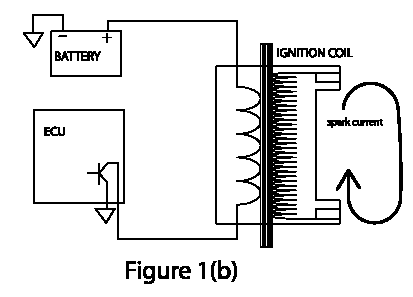
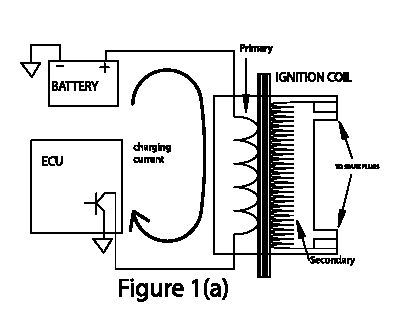
In a Capacitive Discharge Ignition System, the coil does not store the energy prior to firing. The capacitor stores the energy, as shown in Figure 2(a). Then when the ECU wants to create a spark, it triggers the capacitor to fire, and all of the energy stored in the capacitor is delivered to the coil in a very short, high power pulse as shown in Figure 2(b). This pulse will be several hundreds of volts. The coil then acts as a transformer, and changes that pulse into several thousand volts, enough to create the spark. The Capacitive Discharge Ignition requires zero dwell time for the coils, the maximum RPM is limited by how quickly the capacitor can be recharged. This allows CD Ignitions to hold consistent spark energy at much higher RPM than factory inductive ignitions. It also means that CD Ignitions can work with a much broader range of coils than stock inductive ignitions, since dwell time no longer is a critical parameter.
Spark Restrike
CD Ignitions provide a more powerful, but very short spark.
Inductive ignitions create a spark that lasts significantly longer. Because of
how the energy is stored in a magnetic field within the ignition coil, any time
an inductive spark is blown out, it will try to restart the spark automatically.
CD Ignitions deliver most of their energy so quickly that if a spark is blown
out, it will almost never have time or energy to restart the spark. This matters
most under light load and lean air
fuel mixtures, when it may be possible for a spark to fire, but not have any
fuel in the spark gap. The ability to re-strike the spark at that point will
ensure a complete combustion, and smoother running. This statement needs to be
repeated: Multiple sparks on a CDI are NOT for power gains, but rather for
cleaning up emissions. Most typical CD Ignitions fire the multi-sparks around 1
spark per millisecond. This rate is tied to the amount of time it takes them to
recharge the capacitor. While this may seem quick at first glance, 1 millisecond
is 18 degrees later at just 3000 RPM. And many CD Ignitions stop multiple sparks
in the 3000-4000 RPM range, because it just takes too long to get that second
spark. With that much timing delay, multiple sparks are clearly not for power.
The ARC-2 improves upon this by lowering the time it takes to
get that second spark, using a proprietary technique called Intelligent Spark
Profiling, or ISP.
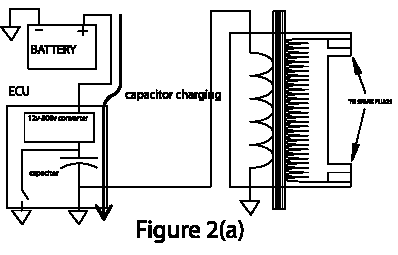
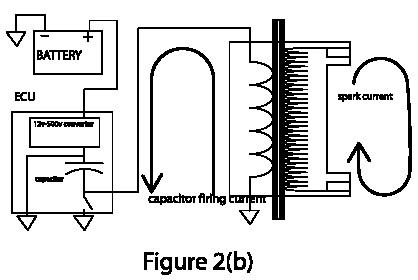
Ignition Coils
On vehicles equipped with inductive ignitions, there are a wide variety of coils. Some coils have 4 outputs, some have 2, and some have 1. The 4 output coils are usually dual 2 output coils molded into 1 package. The 2 output coils are designed to fire both spark plugs at the same time. The ARC- 2 can handle all of these configurations.
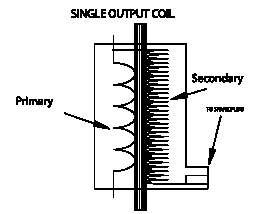
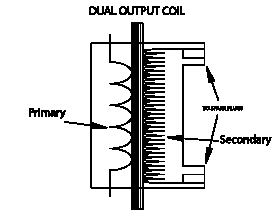
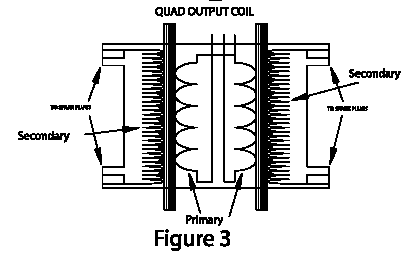
Some coils have the drive circuitry (the part that draws the current through the coil to charge the coil) built into the coil itself. In other applications, that drive circuitry is built into the ECU, or built into a separate device sometimes called a power transistor. A CD Ignition will NOT work with a coil that has the drive circuitry built intothe coil. In order to make a CD Ignition work on those vehicles, you must replace the coils with coils that do not have that drive circuitry. These vehicles usually also have a coil signal that is inverted from a standard coil signal. So the CD Ignition has to be capable of reading this inverted signal. The ARC-2 can be set up to work with standard coil signals, or inverted signals, like those used by coils with driver circuitry built in. The most common way to identify a coil with the drive circuitry built in is looking at its wiring:
A standard single or dual output ignition coil will have 2 wires
A 4 output standard ignition coil will have 3 wires
a wire to 12V, and 2 wires to the ECU or power transistor. Each of theA single or dual output coil with drive circuitry will have 3 wires
a wire to 12V, a wire to ground, and a wire from the ECU. Some models of coil
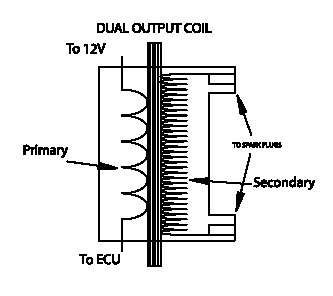
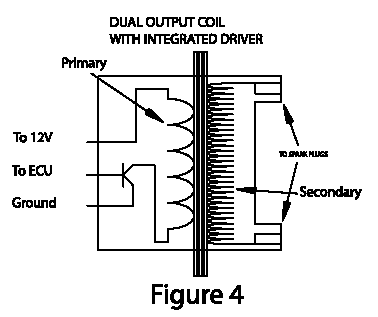
Not all coils will conform to this, so it is a good idea to consult the vehicle owners manual for wiring diagrams of the coils before attempting to do any wiring. Some vehicles have external power transistors, which are the circuits that control the current flow in inductive coils. If installing on a vehicle with a power transistor, you have 2 choices. You can install the ARC-2 between the power transistor and coil, and set it up like a standard coil. Or you can remove the power transistor, and wire the ARC-2 directly to the ECU and coil, and set the ARC-2 up as if you were replacing a coil w/driver. In addition to the above, when trying to select coils for use with a CDI, you should pick coils with a relatively low primary resistance, preferably under 0.5 ohm.
Spark Plugs
The high voltage short duration of a CD Ignition allows it to fire across spark plug gaps that are too large for standard inductive coils. Oftentimes, inductive ignitions will require that a spark plug gap be decreased from stock to work under boost. With a CD Ignition, the gap can usually be left at the factory setting or even increased over stock. The amount of allowable gap will vary based on vehicle, coil, and cylinder pressure. So while there is no set value to use, starting with the OE recommended plug gap is a safe bet. A colder plug may also be necessary.
Use with an aftermarket ECU
Aftermarket ECUs often have programmable dwell times, as well as programmable ignition timing tables. These dwell values may be set up to vary with battery voltage. For a CDI, there is no need for a dwell time, or to vary it with battery voltage, but the dwell time should be a nonzero value. Some ECUs come with a CDI output option, which would be good to use. Some ECUs are offered as plug-n-play and should control the coils very close to the same as the stock ECU. You should be able to use the ARC-2 with it just as if it were a stock ECU.
Wire Functions:
The wires on the ARC-2 are color coded as follows:
On the 2 pin power connector (12 gauge wiring)
Red Battery 12V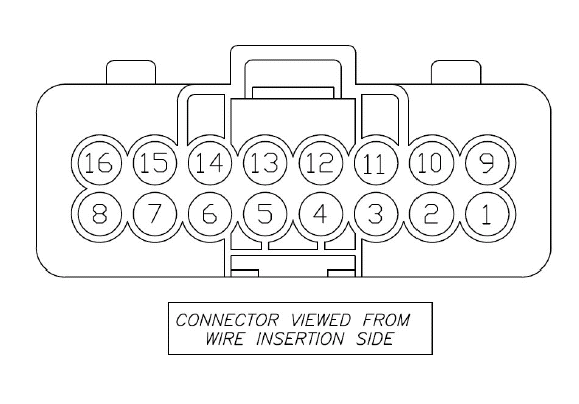
Black Battery Ground
On the 16 pin connector:
1) Blue Output to Coil 1
2) Black Coil Ground
6) Green Tach Signal
7) Blue/Black Coil 1 Signal from ECU
8) Purple Retard Enable
9) White Output to Coil 2
10) Black Coil Ground
12) Orange 12V to Coil
14) White/Black Coil 2 Signal from ECU
16) Purple/White Clutch Switch for Launch Limiter
Standard Installation Procedure:
Disconnect vehicle battery ground.
Determine if the coils are compatible with the ARC-2, as described in Pre Installation.
Mount ARC-2 main unit in desired location. Mount it away from
heat sources such as exhaust
manifolds. Make sure the power harness can reach the battery. The closer to
the battery you can
mount it, the better. Make sure that the main harness is able to reach the
coils.
Wire Power Harness to vehicle battery. Cut it to length as
needed, shorter power wires are better.
Do not cut itshorter than the fuse connector, as you must keep a fuse in the
power line for safety.
Wire Main Harness (from the install kit) using the Standard
Installation Diagrams shown below.
For each wire, perform the cut first then splice the wires onto the 2 cut wire
ends as shown.
Make sure the Coil Edge Select switch on the ARC-2 is set to
the correct setting. Set the Launch
Limiter RPM to Off.
Plug in Power Harness, install fuse. Plug in Main Harness.
Reconnect vehicle ground.
Turn off Spark Restrike, and check vehicle idle timing, to
make sure that it is in spec. This will
verify that you havethe Coil Edge Select set correctly.
Once the ARC-2 is installed and working, you can wire in the additional features.
Standard Installation Diagrams:
Note: Perform all cuts and splices close to the coil. There should be NOTHING ELSE connected to the wires that go between the ARC-2 and coil (the white, blue, and black wires). Failure to follow this will likely damage anything else connected, and possibly damage the ARC-2 and coil as well.
Typical 4 cylinder Distributorless Ignition, 2-coil setup:
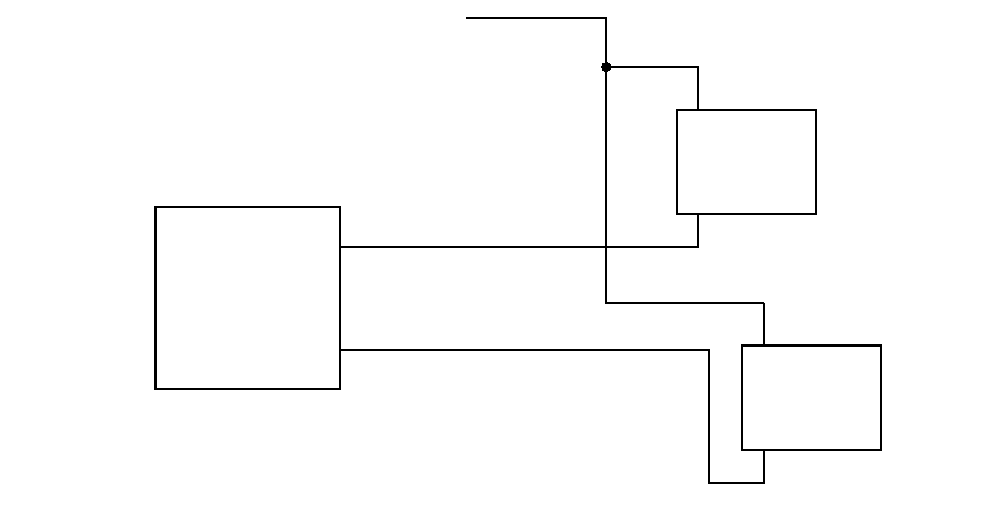
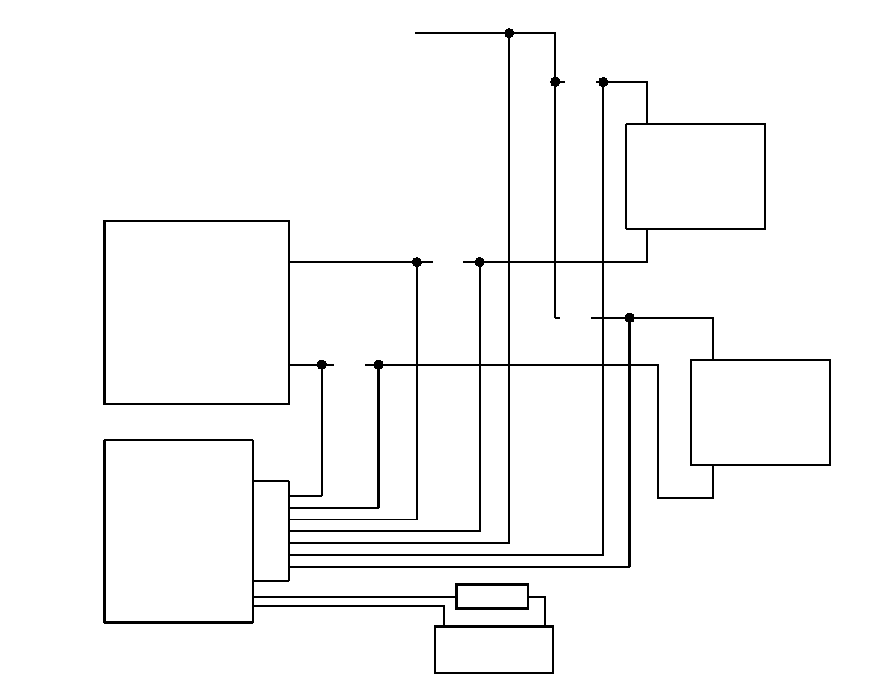
Standard Installation Diagrams:
Note: Perform all cuts and splices close to the coil. There should be NOTHING ELSE connected to the wires that go between the ARC-2 and coil (the white, blue, and black wires). Failure to follow this will likely damage anything else connected, and possibly damage the ARC-2 and coil as well.
Typical 4 cylinder Distributorless Ignition, 4-coil on plug (COP) setup:
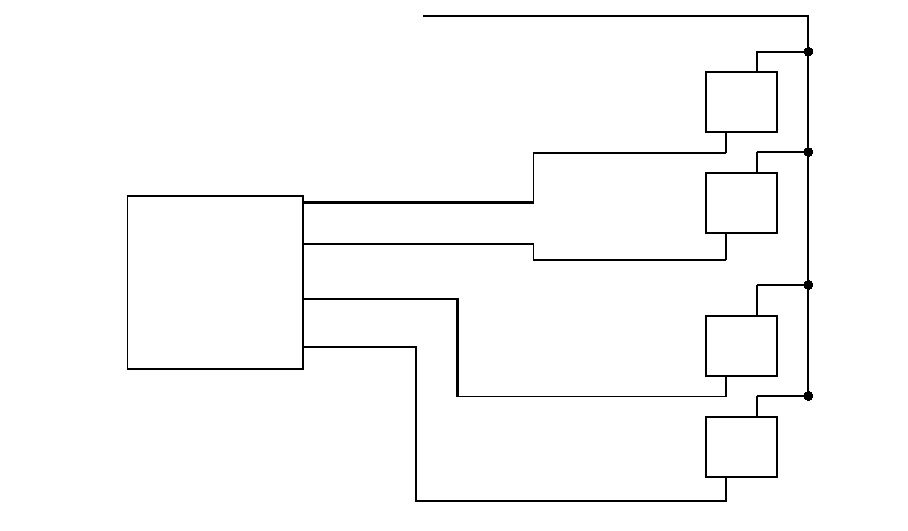
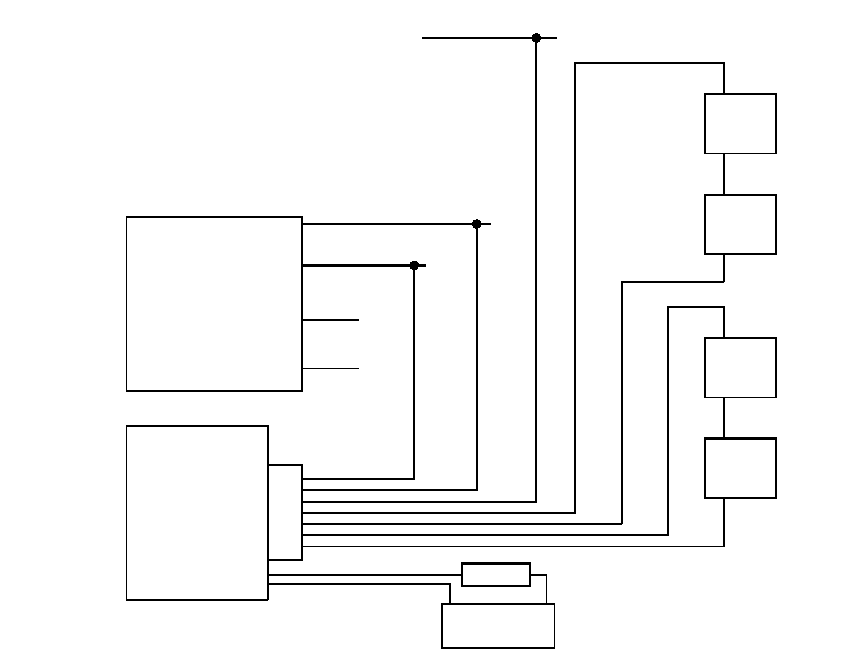
Standard Installation Diagrams:
Note: Perform all cuts and splices close to the coil. There should be NOTHING ELSE connected to the wires that go between the ARC-2 and coil (the white, blue, and black wires). Failure to follow this will likely damage anything else connected, and possibly damage the ARC-2 and coil as well.
Typical 4 cylinder Distributorless Ignition, 2-coil setup with Integrated Drivers (Ex: Evo8):
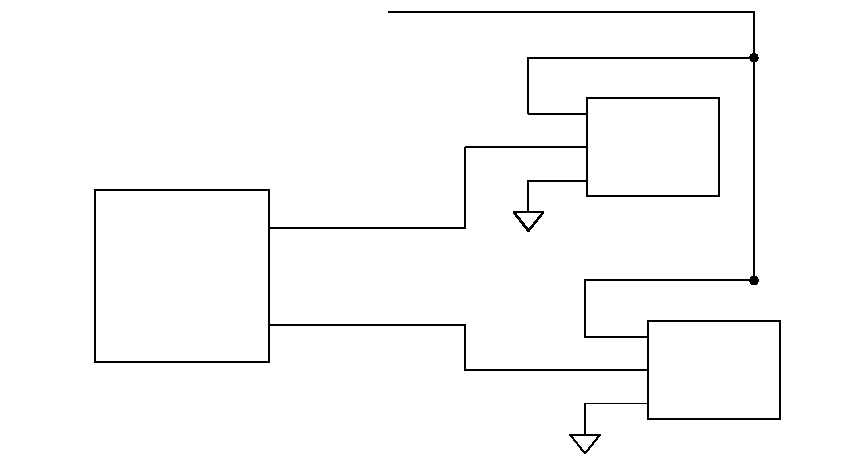
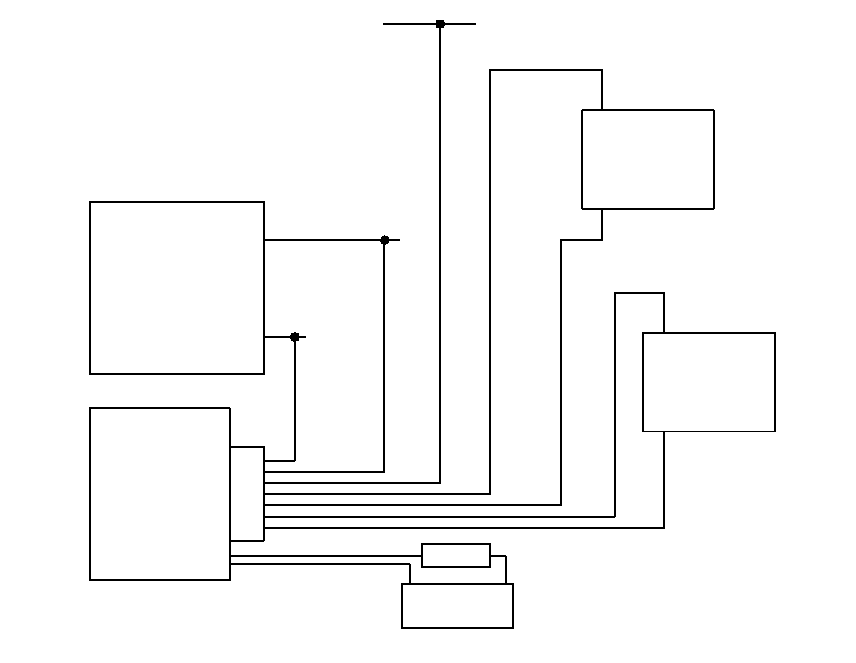
Features and Auxillary Wiring Diagrams:
DIP Switch and Rotary Switches
There are 2 dip switches on the ARC-2 module, and 2 rotary switches. All switches are read at power up, and not read afterwards. This is for reliability in high vibration environments, and to ensure that settings can not be accidentally tampered with while the engine is running. If you change switch settings, you will need to turn off the engine and restart it for the new settings to be read.
Spark Restrike On/off
This DIP Switch allows the user to select between having the ARC-2 fire only one time at all RPMs, or having it re-strike at lower RPMs. This is useful for setting/checking engine timing, and also if there are other electronics that might be confused by multiple sparks.
Coil Edge Select
The Coil Edge Select Switch allows the user to change how the input signal is read. It can be set to look for a signal from the ECU for a standard coil, or can be set for a typical coil with driver. This changes the edge that the CD Ignition fires on. With a standard coil and stock ignition, the spark occurs when the voltage to the coil goes from 0 to 12V. The ARC-2 looks for this rising edge signal, and this is where it fires. With a driver-in-coil setup (example: Mitsubishi Evo8), the spark occurs when the signal to the coil goes from 12V or 5V down to 0V. So the ARC-2 looks for the falling edge signal, and this is where it fires.
Two Step Launch Limiter
The Two Step Launch limiter allows the user to pre set a lower RPM limit that can be enabled or disabled with a switch. This is often used in drag racing as a way to get quicker, more consistent launches. The limit allows the driver to keep the gas pedal floored and the engine held at that lower RPM, which also allows turbo to spool up before the start of the race. Then when it is time to go, the driver is able to leave the gas floored, and just adjust the speed of the clutch release to get the fastest possible launch. The launch limiter is enabled with a switched input. Select a quality switch to mount on the clutch lever or pedal. Grounding the input wire enables the launch limit, removing the ground disables the launch RPM limit, and allows the engine to rev to its normal RPM limit. Launch limiters are normally wired to a clutch switch that shuts the limiter off automatically once the clutch is released.
The ARC-2 launch limiter is adjustable from 3,000-11,900 RPM in increments of 100 RPM. To set the RPM for the
launch limiter, simply adjust the knobs on the ARC-2 to the desired RPM. The knob labeled X1000 sets the RPM value in thousands, and the knob labeled X100 sets the RPM value in hundreds. For example, to set the launch limit to 6400 RPM, you would set the X1000 knob to 6, and the X100 knob to 4.
Setting the X1000 knob to OFF disables the launch limit. The launch RPM knobs are only read by the ignition at startup, to prevent any sort of vibration problems. So if you change the knobs with the engine running, it will not take effect until the next time you shut down, and restart the engine.
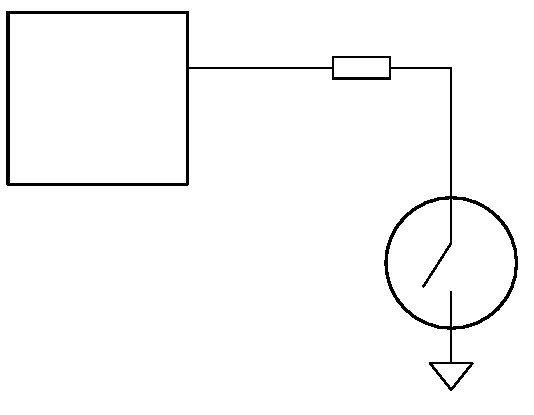
Troubleshooting
If the unit is not running at all, first check the 30A fuse and make sure it is still intact. Then make sure it is getting 12V and ground on the main power harness. If the unit is getting 12V, then look at the coil wiring connections. If the unit is running but poorly, check the conditions of the spark plugs spark plug boots, and plug wires. Try to determine if the problem is with one specific cylinder, or one channel on the ignition, or if it occurs on all of them. Inspect all wiring. Make sure the Coil Edge Select is set correctly. You can verify this with a timing light. In order to check the timing with a timing light, you will need to disable the Spark Re-strike temporarily.
Timing Retard
The timing retard function allows the user to retard the ignition timing by a fixed ten degrees (10°) when the timing retard input is enabled. To activate the timing retard, the Purple timing retard wire needs to be grounded. Removing the input wire from ground will de-activate the retard, and fire without any delay.
Tach output
An optional tach output wire is included in the harness. This creates a tach signal based off the input into channel 1. It will be double the frequency of channel 1, so it should work with standard 4 cylinder tachs, as well as with most aftermarket electronics. It is a 12V square wave with a duty cycle of approximately 50%. Some vehicles read the tach signal off of one of the coil signal wires. If this signal is not there, the tach may not operate. In some cases, the ECU might look at the signals to each coil, and if it doesn't see a coil firing, the ECU could shut down the signal to that cylinders coil or injectors. This is very common on newer 4 cylinder bikes with coil on plug. Vehicle specific harnesses will include a tach adaptor adapter to correct this, if it is needed for that application. If a tach adaptor is required on a custom application, contact Dynatek for a Universal Tach Adaptor kit.